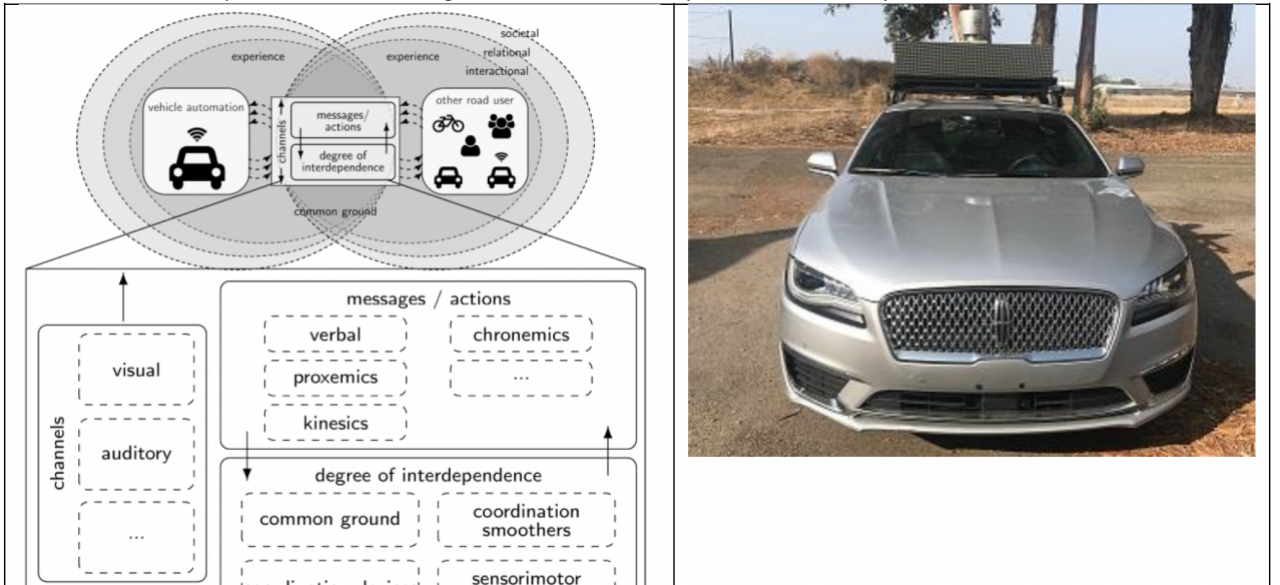Implicit Communication of Automated Vehicles: Using Vehicle Movement Cues for Coordination with Pedestrians at Intersections

ABOUT THIS PROJECT
At a glance
Automated vehicle (AV) communication with pedestrians and vulnerable road users (VRU) is a critical research question for AV's acceptance by the general public. This research topic is not only a design question. Rather, it is a complicated research question associated with other critical aspects of AV deployment, including safe operation domains, infrastructure upgrade for segregating VRUs from AVs, traffic regulation for mixed-mode of driving, and standardization and education. Human-factors researchers have implemented many studies to investigate the effects of using external human machine interfaces (eHMI), such as LED lights or text messages, to signal AV’s intention (e.g., stopping, moving, starting) when interacting with the pedestrians at intersections. One study was conducted by the BDD researchers (https://deepdrive.berkeley.edu/project/interaction-and-communication-between-pedestrians-and-autonomous-vehicles). The research team has found that eHMI helped pedestrians to feel safer when interacting with the AVs, and it should communicate the intent and status of AVs without instructing people what to do. On the other hand, it was also found that vehicle movement patterns (e.g., vehicle speed, distance), instead of the eHMI, continued to be a significant cue for pedestrians to decide when to cross the intersections . Therefore, vehicle movement cues are suggested to be considered as the primary communication channel. Understanding where the vehicle movement cues are ineffective would help decide what information should be added and how it should be communicated.
| principal investigators | researchers | themes |
|---|---|---|
| Rui Lin | pedestrians and automated vehicle interaction, implicit communication, vehicle movement cues |
This is a continuation of the completed project: Interaction and Communication Between Pedestrians and Autonomous Vehicles.

